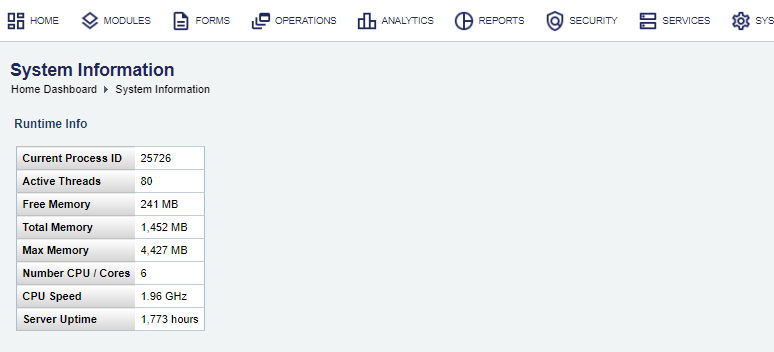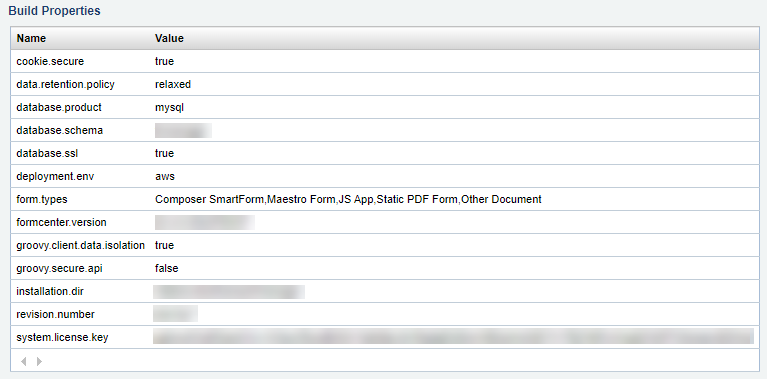System Info
Journey Manager (JM) The transaction engine for the platform. | System Manager / DevOps | All versions This feature is related to all versions.
Manager allows you to see some important server's information, which you can use to troubleshoot server performance issues.
To view the server's system information, select System > System Info.
The system information is broken down into the following sections:
Runtime Info
This section shows the current runtime load of the server, which is useful to check the server performance.

Build Properties
This section shows the server's build and installation configuration.

Some important properties are:
groovy.client.data.isolation- If set to
true, Manager uses a client's organization to execute the Groovy Script for users who don't have global access. deployment.env- Shows the deployment mode of Manager, which was chosen during the installation. For example,
awsmeans the AWS Cloud deployment.
System Properties
This section shows the server's JavaJava is a programming language that produces software for multiple platforms. When a programmer writes a Java application, the compiled code (known as bytecode) runs on most operating systems (OS), including Windows, Linux and Mac OS. Java derives much of its syntax from the C and C++ programming languages. and GroovyGroovy is a powerful scripting language which runs on the Java Virtual Machine. Across theTemenos Journey Manager platform, Groovy is used to create services in Manager. These services are primarily used to create plug-in style systems that interact with Manager. configuration.

Some important properties are:
user.timezone- Checks the server's timezone, which is important for correct database configuration, see configure timezone for MySQL database.
In some cases, you need to change some of the System Properties to implement your specific requirements or adjust Manager performance. You can do this via the Fluent API. For example, the Fluent API's HttpRequest base class has setSocketTimeout() and setConnectTimeout() methods, so you can set timeout values after creating a GetRequest or PostRequest. However, in most cases, you need to contact your System Administrator to request the change.
Next, learn how to check system health.